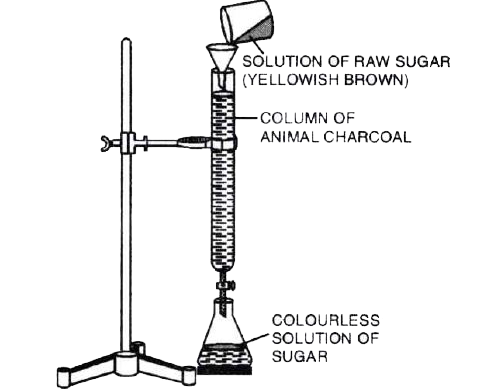Which of the following phenomenon light forms a rainbow?
Reflection of light
Refraction
Total internal reflection
Reflection as well as refraction
The correct Answer is:D
To determine which phenomenon of light forms a rainbow, we can analyze the process step by step:
1. Understanding the Formation of a Rainbow:
A rainbow is formed when sunlight interacts with water droplets in the atmosphere. This interaction involves multiple optical phenomena.
2. Refraction:
When sunlight enters a water droplet, it slows down and bends due to a change in medium from air to water. This bending of light is called refraction. As the light refracts, it disperses into its constituent colors (red, orange, yellow, green, blue, indigo, violet) because different colors of light bend by different amounts.
3. Internal Reflection:
After refraction, the light travels inside the droplet and reaches the back surface of the droplet. Here, it undergoes total internal reflection. This means that the light reflects off the inner surface of the droplet instead of passing through it.
4. Second Refraction:
The internally reflected light then travels back towards the front of the droplet. As it exits the droplet, it refracts again. This second refraction further separates the colors, enhancing the visibility of the rainbow.
5. Conclusion:
The overall process of forming a rainbow involves both refraction (when light enters and exits the droplet) and reflection (the internal reflection inside the droplet). Thus, the correct answer is that a rainbow is formed by both reflection and refraction.
Final Answer:
The phenomenon that forms a rainbow is reflection as well as refraction.
---
A rainbow is formed when sunlight interacts with water droplets in the atmosphere. This interaction involves multiple optical phenomena.
When sunlight enters a water droplet, it slows down and bends due to a change in medium from air to water. This bending of light is called refraction. As the light refracts, it disperses into its constituent colors (red, orange, yellow, green, blue, indigo, violet) because different colors of light bend by different amounts.
After refraction, the light travels inside the droplet and reaches the back surface of the droplet. Here, it undergoes total internal reflection. This means that the light reflects off the inner surface of the droplet instead of passing through it.
The internally reflected light then travels back towards the front of the droplet. As it exits the droplet, it refracts again. This second refraction further separates the colors, enhancing the visibility of the rainbow.
The overall process of forming a rainbow involves both refraction (when light enters and exits the droplet) and reflection (the internal reflection inside the droplet). Thus, the correct answer is that a rainbow is formed by both reflection and refraction.
The phenomenon that forms a rainbow is reflection as well as refraction.
Topper's Solved these Questions
- RAY OPTICS AND OPTICAL INSTRUMENTSBOOK - AAKASH INSTITUTE ENGLISHCHAPTER - RAY OPTICS AND OPTICAL INSTRUMENTSEXERCISE - ASSIGNMENT (SECTION - B)
35 Videos
- RAY OPTICS AND OPTICAL INSTRUMENTSBOOK - AAKASH INSTITUTE ENGLISHCHAPTER - RAY OPTICS AND OPTICAL INSTRUMENTSEXERCISE - ASSIGNMENT (SECTION - C)
80 Videos
- RAY OPTICS AND OPTICAL INSTRUMENTSBOOK - AAKASH INSTITUTE ENGLISHCHAPTER - RAY OPTICS AND OPTICAL INSTRUMENTSEXERCISE - EXERCISE
45 Videos
- PHYSICAL WORLDBOOK - AAKASH INSTITUTE ENGLISHCHAPTER - PHYSICAL WORLDEXERCISE - ASSIGNMENT (Section-B)
4 Videos
- SEMICONDUCTOR ELECTRONICS (MATERIAL, DEVICES AND SIMPLE CIRUITS )BOOK - AAKASH INSTITUTE ENGLISHCHAPTER - SEMICONDUCTOR ELECTRONICS (MATERIAL, DEVICES AND SIMPLE CIRUITS )EXERCISE - Assignment SECTION - D (Assertion & reason type Question)
10 Videos
Similar Questions
Knowledge Check
Which of the following phenomenon is not explanined by Huygen's construction of wavefront ?
AreflectionBdiffractionCrefractionDorigin of spectraWhich of the following phenomenon is applicable to the process shown in the Fig. ?
 AAbsorptionBAdsorptionCCoagulationDEmulsification
AAbsorptionBAdsorptionCCoagulationDEmulsificationWhich of the following phenomenon is not shown by sound waves ?
AInterferenceBDiffractionCPolarisationDReflection
Which of the following phenomenon is not common to sound and light waves
View SolutionWhich of the following phenomenon could not be explained by wave nature of light?
View SolutionWhich of the following phenomenon is not explanined by Huygen's construction of wavefront ?
View SolutionWhich of the following phenomenon will not be carried out in absence of guard cells
View SolutionWhich of the following living phenomenon is absent in viruses?
View Solution
